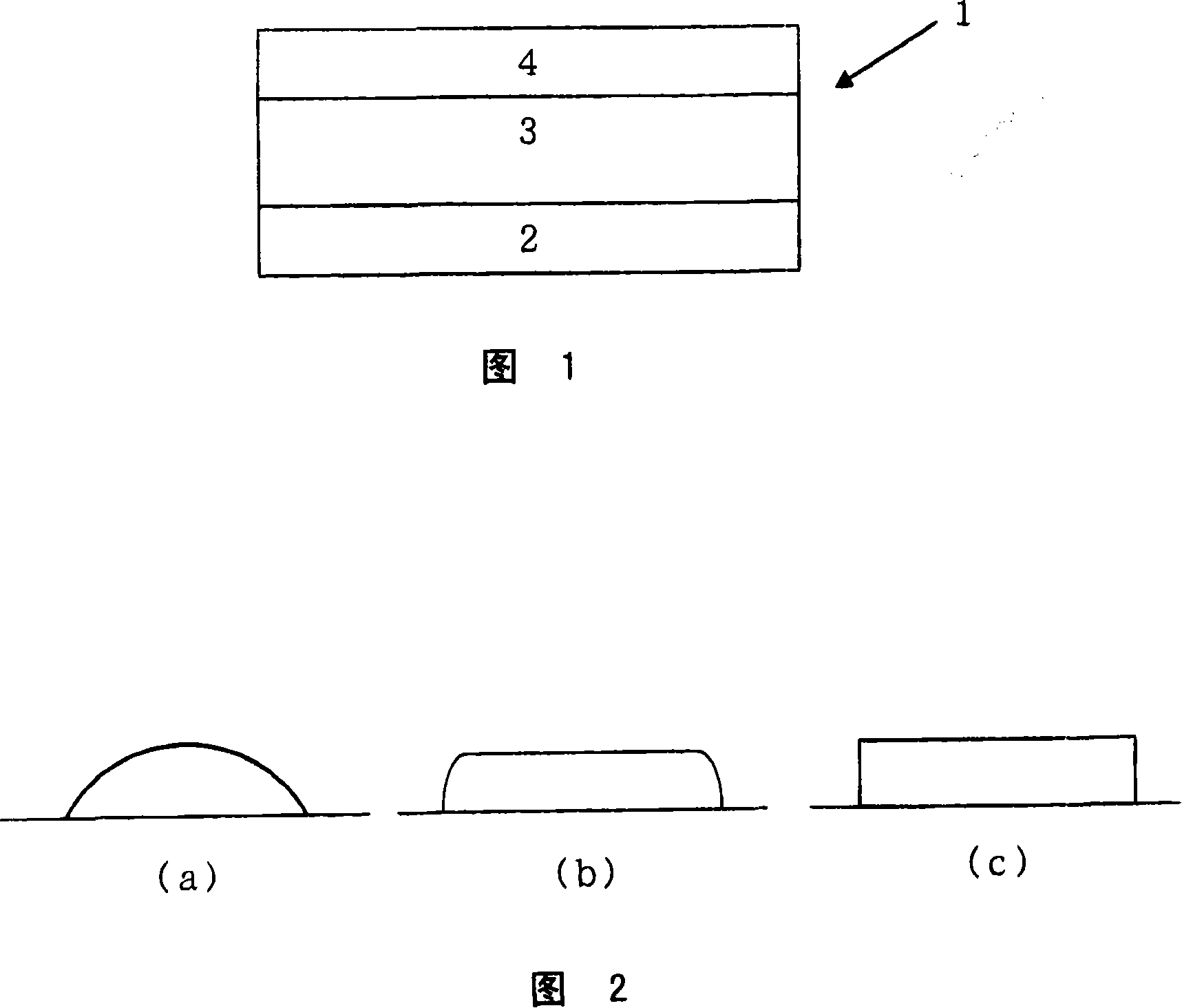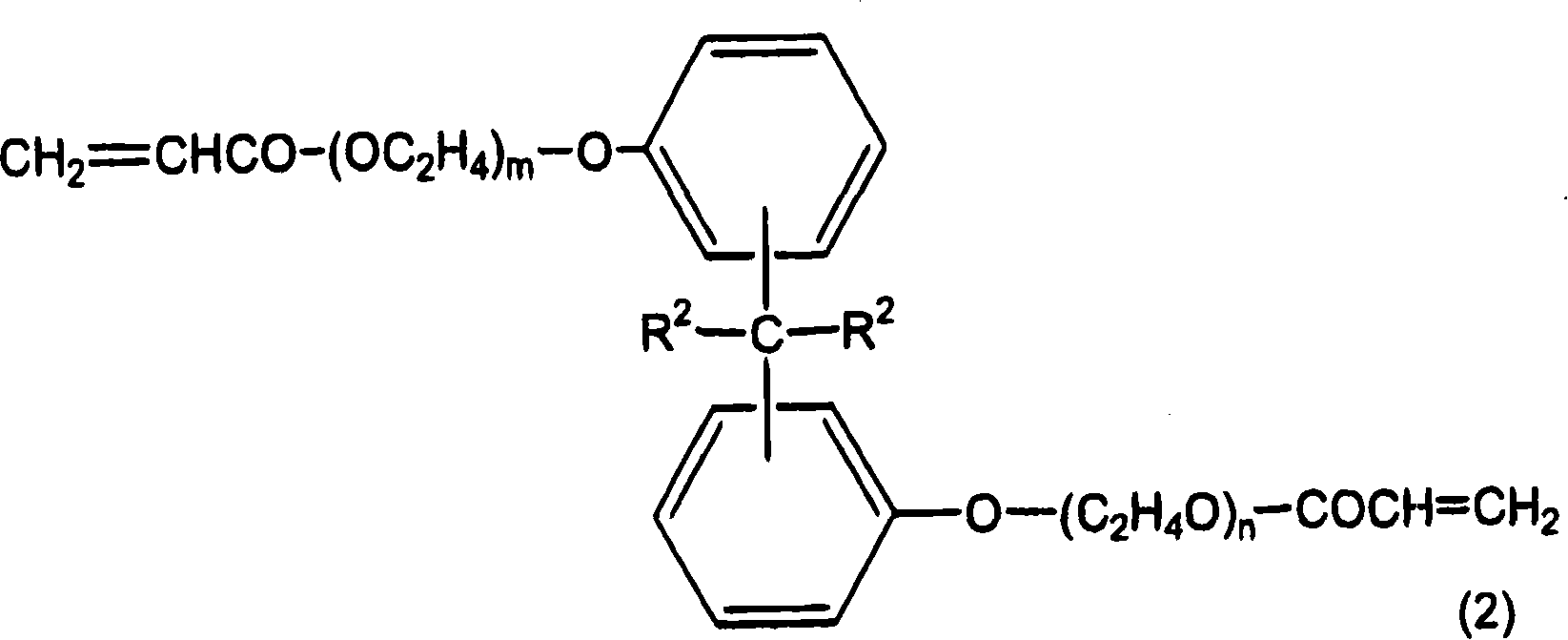Dry film, micro-lens and manufacturing method thereof
A technology of microlens and dry film, which is applied in the photographic process of patterned surface, photosensitive material for optomechanical equipment, optics, etc. It can solve the problem of insufficient lens strength and solvent resistance, and lens shape defects, which have not been proposed. And other issues
- Summary
- Abstract
- Description
- Claims
- Application Information
AI Technical Summary
Problems solved by technology
Method used
Image
Examples
Embodiment
[0307] The following examples and comparative examples are used to further specifically explain the present invention, but the present invention is not limited to the following examples.
[0308] The three-dimensional ten-point average roughness SRz and the three-dimensional maximum height SRmax of each base film were evaluated with a white interference microscope "New View 5032" (produced by ZYGO).
[0309] The adhesion of the cover film was evaluated by crimping a 50 mm wide sample on a PMMA plate at room temperature (23° C.) with a pressure of 0.45 MPa, and then performing state adjustment at room temperature for 20 minutes, and then performing a peel test.
[0310]
Synthetic example 1
[0312] After replacing the flask with nitrogen, 3 g of a radical polymerization initiator 2,2'-azobisisobutyronitrile and 100 g of methyl 3-methoxypropionate as a solvent were added and stirred until the radical polymerization initiator was dissolved until. Then, add 19g of methacrylic acid, 15g of 2-mono(hexahydrophthaloyloxy)ethyl methacrylate, 15g of styrene and 46g of tricyclodecyl methacrylate, slowly start stirring, and add further 5g isoprene. Then, the temperature of the reaction solution was raised to 80°C and polymerized at this temperature for 4 hours to obtain 2-(hexahydrophthaloyloxy)ethyl methacrylic acid / methacrylic acid / styrene / formaldehyde Tricyclodecyl acrylate / isoprene copolymer (copolymer weight ratio = 19 / 15 / 15 / 46 / 5, M w = 13,000, M n =8,000) copolymer solution. The copolymer contained in this copolymer solution is referred to as copolymer (A-1).
Synthetic example 2
[0314] Except for changing the type and amount of the unsaturated compound, the polymerization reaction was carried out in the same manner as in Synthesis Example 1, and the obtained product contained methacrylic acid / styrene / benzyl methacrylate / glyceryl monomethacrylate / N-phenyl Lyimide copolymer (copolymer weight ratio = 15 / 15 / 35 / 10 / 25, M w =7,000, M n =4,000) copolymer solution. The copolymer contained in this copolymer solution is referred to as copolymer (A-2).
PUM
| Property | Measurement | Unit |
|---|---|---|
| thickness | aaaaa | aaaaa |
| thickness | aaaaa | aaaaa |
| mean roughness | aaaaa | aaaaa |
Abstract
Description
Claims
Application Information
 Login to View More
Login to View More - R&D
- Intellectual Property
- Life Sciences
- Materials
- Tech Scout
- Unparalleled Data Quality
- Higher Quality Content
- 60% Fewer Hallucinations
Browse by: Latest US Patents, China's latest patents, Technical Efficacy Thesaurus, Application Domain, Technology Topic, Popular Technical Reports.
© 2025 PatSnap. All rights reserved.Legal|Privacy policy|Modern Slavery Act Transparency Statement|Sitemap|About US| Contact US: help@patsnap.com



